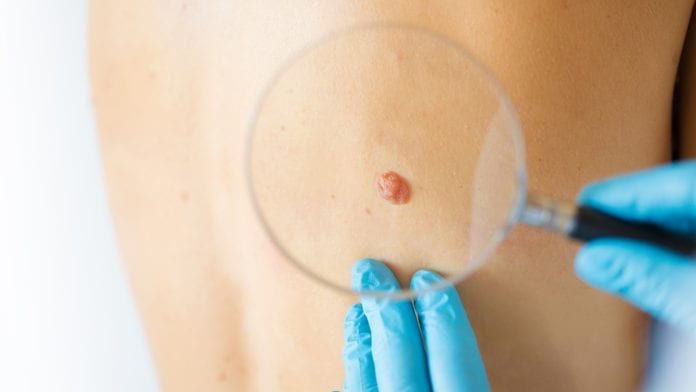
Dr Amy Poyner, a GP on the Isle of Wight with a special interest (GPwSI) in Surgical Dermatology, highlights how using the Dermicus Teledermatology Assessment Service has not only improved the process for skin cancer diagnosis but ensured referrals continue as normal during the COVID-19 pandemic.
Like every part of the NHS, the island t has been doing everything it can to respond to the demand on services following the outbreak of COVID-19. Quite rightly, a significant amount of resource, investment, and commitment has been put into helping the health service treat those with the virus. However, understandably there are growing concerns about patients receiving vital services that are not related to COVID-19, for example, cancer diagnosis and treatment. In the Isle of Wight, melanoma diagnoses are three times higher than the national average, and non-melanoma skin cancer is five times higher.
Coupled with this, we have two part-time visiting dermatologist consultants (who live on the mainland) and an over-stretched resource in primary care, caused partly by the higher than average population of elderly residents.
Safeguarding skin cancer services
However, the Dermicus Teledermatology Assessment Service (Dermicus) that we introduced last year has ensured that patients with a suspicious skin lesion can be seen by their GP and referred to a dermatologist for diagnosis, without any delays or impact from COVID-19.
The very nature of the teledermatology set-up, supplied by Gnosco, has ensured the service has been safeguarded during these unprecedented times. Photos of the skin lesion are taken by a GP or Advanced Nurse Practitioner on a phone (with an attached dermascope) and sent quickly, easily, and securely to a clinician (with medical notes) to review and make a diagnosis remotely. The online platform where the information is accessed also allows for collaboration between healthcare professionals without any need for physical contact.
With the current social distancing regulations in place, we can protect our patients from unnecessary face-to-face contact with the consultant, through the use of remote diagnosis. In spite of one of the visiting dermatologists recently having to self-isolate, there haven’t been any delays to the two-week wait time for a skin cancer diagnosis; the clinician was able to review his caseload as normal on the Dermicus collaboration platform. Likewise, our GP practices have been able to access the diagnosis on the same platform, as normal, and subsequently follow the appropriate action with the patients.
Transforming the patient pathway
The digital first approach has not only enabled us to protect these vital services during such unprecedented times but maintain the significantly improved patient pathway achieved as a result of deploying the Dermicus service last year.
Since implementation we have seen the time it takes from GP referral to dermatologist review reduce exponentially. Whereas the collective wait time for all dermatology referrals (routine, urgent and two-week wait) is normally about four weeks on the island, we have been able to reduce it to less than a week. There is no doubt that this has enabled us to identify skin cancers much faster than before, and importantly, introduce treatment pathways earlier, which in some cases will have implications for overall survival rates from the original cancer.
The approach has also provided an additional safety net within GP practices, by minimising the risk of melanomas and non-melanoma skin cancers being included in routine referrals to dermatology, which are managed along a much slower timeline. It has also improved the accuracy of referrals from GP practices, particularly from practitioners with less experience in dermatology.
Finally, and most importantly, there is the significant impact on our patients’ experience with the service and their mental wellbeing during this very traumatic and worrying time. Feedback has shown that patients think it has improved the skin examination, and the fast and easy process has added a significant level of reassurance at a much earlier stage. It has also reduced the need for them to take time off work to attend the referral appointment, or for the elderly and most vulnerable to travel into the clinic to be seen.
Planning for the future
It was clear before COVID-19 how effective the new service had been in improving care for our patients, but the recent pandemic has demonstrated additional benefits of the remote technology and online collaboration that we couldn’t have predicted when we started this initiative. Without Dermicus, we would have had to temporarily stop some of these services and rapidly plan alternative work arounds.
It’s why we think it’s so important to continue to scale the use of technology in our health services and will be looking to extend the teledermatology service to all dermatology needs on the island. We are also considering introducing Gnosco’s telemedicine service for wound care, so that a much wider part of our community can benefit from these vital services, and importantly, we can continue to safeguard these services now, and in the future.
Dr Amy Poyner
Guest author
GP
Isle of Wight









